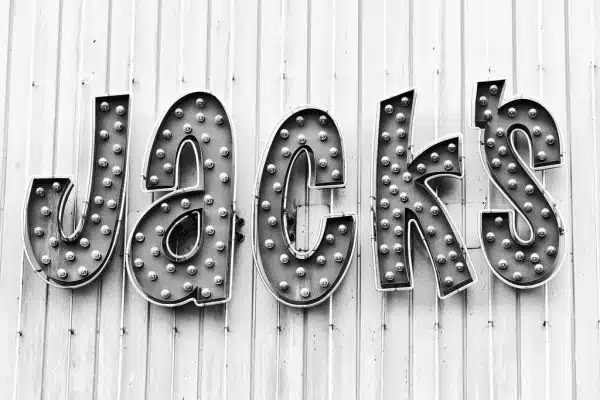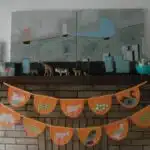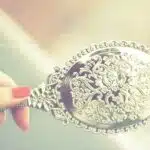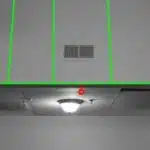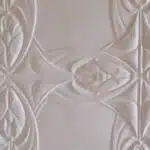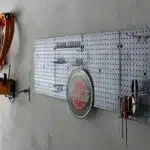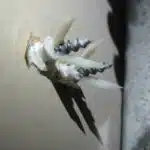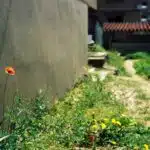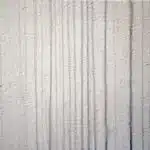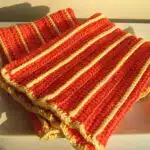Decorating a wall with plates is an elegant and timeless way to add character and personality to any room. However, figuring out how to hang plates on a wall can be a daunting task without proper guidance. As a home decor expert, I have seen many homeowners struggle with this task, often resulting in broken plates or crooked displays. In this article, I will provide you with the necessary steps to confidently hang your beloved plates on any wall in your home.
The key to successful plate hanging is understanding the different options available for hardware and placement. Depending on the weight of your plates and the type of walls in your home, certain hardware may work better than others. Additionally, determining the proper spacing and placement of the plates can greatly enhance their overall effect on the space they occupy. By following these simple guidelines, you will be able to create a stunning display that not only showcases your personal style but also serves as a conversation piece for guests who visit your home.
Choosing The Right Plates For Display
When it comes to hanging plates on a wall, choosing the right plates for display is a crucial first step. Plate shapes and color schemes play a significant role in this decision-making process. The shape of the plate should complement the overall theme of the room, while its color should either blend with or provide contrast to the wall color.
For example, if you have a contemporary-style living room with neutral-colored walls, square-shaped plates with bold colors can add a pop of excitement to the space. On the other hand, if you have a rustic-style kitchen with wooden accents, round-shaped plates with earthy tones can create an inviting atmosphere. It’s important to remember that your choice of plates can make or break your wall display.
When selecting plates for display, it’s also essential to consider their size and weight. Larger and heavier plates may require stronger hangers or additional support to prevent them from falling off the wall. In the next section, we will assess how to determine the weight of your plates accurately and find suitable hangers for each plate type. By following these guidelines, you’ll be well on your way to creating an aesthetically pleasing plate display that stays firmly in place on your wall.
Assessing The Weight Of Your Plates
When hanging plates on a wall, it is crucial to assess their weight to ensure they do not fall or damage your wall. One way to assess plate weight is by determining size. Large plates tend to be heavier than small ones, and their weight should be taken into consideration when selecting a hanging method. Additionally, plate material can also impact weight, with ceramic and porcelain plates being heavier than glass or plastic ones.
In assessing plate size, consider using a scale or measuring tape to determine the exact weight and dimensions of your plates. This will help you select appropriate hanging hardware that can support the weight of your plates without damaging your wall. If you have several large or heavy plates, it may be best to use multiple hooks or hangers for added support.
Determining plate material is also important in assessing weight. Ceramic and porcelain plates tend to be heavier than glass or plastic ones. If you are unsure about the material of your plates, try tapping them gently with a utensil; ceramic and porcelain will produce a higher-pitched sound than glass or plastic. By taking these factors into account, you can hang your plates safely and securely.
Now that you have assessed the weight of your plates based on their size and material, it’s time to move on to understanding your wall type for proper installation.
Understanding Your Wall Type
Before hanging plates on your wall, it is important to understand the type of wall you are dealing with. This will determine which hanging method you should use and what tools you will need. The two most common types of walls are drywall and plaster.
Drywall is a popular material used in modern construction. It is easy to install, lightweight, and affordable. However, drywall can be fragile and may not support heavy objects. To hang plates on a drywall, you will need to use wall anchors that distribute the weight evenly across the surface area of the wall.
On the other hand, plaster walls were commonly used in older homes and buildings. Plaster is denser than drywall and can support more weight without additional reinforcements. However, finding studs behind plaster walls can be challenging unless you have a stud finder tool at hand. Once located, you can use screws to attach your plate hangers directly into the studs.
To summarize, whether you have a drywall or plaster wall determines how you’ll hang your plates. For drywalls, using wall anchors will ensure that your plates stay securely in place while for plaster walls finding studs using a stud finder tool provides an anchor for attaching your plate hangers directly into the wall with screws. With this knowledge about your specific type of wall material at hand, let’s now move on to gathering necessary tools for plate hanging success!
Gathering The Necessary Tools
To successfully hang plates on a wall, it is important to start by gathering all the necessary tools. Proper tool organization ensures that you have everything you need at your fingertips, making the task more efficient and less stressful. Some of the essential tools required to hang plates on a wall include plate hangers, measuring tape, a pencil, a leveler, a hammer, and nails.
Before starting any project involving hanging objects on the wall, it is crucial to take safety precautions. Make sure that your work area is well-lit and free from tripping hazards. Wear appropriate protective gear such as gloves and goggles when handling tools and materials. Inspect the wall surface for any electrical wires or plumbing lines that could be damaged during the installation process.
Proper tool organization and safety precautions are just as important as selecting the right tools for hanging plates on a wall. With these measures in place, you can approach this project with confidence knowing that you have everything you need at hand and are taking steps to ensure your safety. The next step in this process involves measuring and marking your wall to determine where to place each plate – let’s explore this further in the subsequent section.
Measuring And Marking Your Wall
Accurately measuring the wall is essential to ensure the items being hung are properly aligned. Marking the wall with a pencil provides an easy-to-read guide for where the item should be hung. When measuring, be sure to consider the size of the item and the distance between each item. When marking the wall, use painter’s tape to create a template that can be easily adjusted if necessary.
Measuring Wall
Measuring accuracy is key when it comes to hanging plates on a wall. To ensure the perfect display, take the time to measure your wall accurately before marking it. One common mistake is guessing the height at which you want to hang your plates without taking into consideration the size of each plate and how they will fit together on the wall. Use a tape measure to determine the exact distance between each plate and mark it accordingly.
Measuring tips are important when it comes to hanging plates on a wall. Start by measuring the width of your wall and dividing it into equal sections using a pencil. This will help you create a balanced display that looks aesthetically pleasing. Once you have marked where each plate should go, use a level to ensure that they are all straight. If necessary, adjust the positioning until everything lines up perfectly.
In conclusion, measuring your wall accurately is essential for creating an attractive display of hanging plates. By following these measuring tips, you can achieve an organized and visually appealing arrangement that will impress your guests. Taking extra time to measure accurately will save you from having to redo any mistakes or deal with unsightly gaps in your display later on. Remember, patience and precision are key when it comes to home decor!
Marking Wall
When it comes to home decor, hanging plates on a wall is a classic and elegant way to add charm and character to any room. However, achieving the perfect display requires more than just choosing the right plates and hooks. Measuring and marking your wall accurately is crucial in creating a visually pleasing arrangement that will elevate the overall look of your space. In addition to measuring techniques, there are also various wall marking techniques and DIY marking tools that can help you achieve precision and accuracy.
To mark your wall with ease and efficiency, start by using a basic tool such as a pencil or chalk. Make sure to use a light touch so that the marks can easily be erased or covered up later on. If you want to take things up a notch, consider investing in specialty marking tools such as laser levels or adhesive tapes designed specifically for DIY projects like hanging plates on walls. These tools can help you create evenly spaced marks that are both straight and level.
When marking your wall, it’s important to take into consideration factors such as plate size, spacing, and overall balance. To create an aesthetically pleasing display, mark where each plate should go based on these factors while also keeping in mind the width of your wall. Use measuring tape to ensure equal spacing between plates and adjust positioning as needed until everything lines up perfectly. By using these wall marking techniques and DIY marking tools, you’ll be able to achieve precision and accuracy when hanging plates on your walls.
Preparing Your Plates For Hanging
After measuring and marking your wall, it’s time to prepare your plates for hanging. Before anything else, it’s important to clean your plates thoroughly. Dust and dirt can accumulate on the surface of your plates which can affect their appearance over time. Use a damp cloth or sponge with mild soap and water to gently clean the surface of the plate. Dry them completely before proceeding to the next step.
Once you’ve cleaned your plates, it’s time to decide how you want to decorate them on your wall. You can choose to hang them symmetrically or asymmetrically depending on the look you’re going for. A good rule of thumb is to arrange them in odd numbers – three or five – as this creates a more visually appealing display. Experiment with different layouts before settling on one that works best for you.
Now that your plates are clean and decorated, it’s time to select the proper hardware for hanging them securely on your wall. There are several types of plate hangers available in the market such as adhesive hangers, wire hangers, or spring hangers. Make sure to choose a hanger that can support the weight of your plate and is appropriate for the type of wall material you have. By following these steps, you’ll be able to create an eye-catching display that will add personality and charm to any room in your home.
Selecting The Proper Hardware
When hanging plates on a wall, it is important to consider the type of hooks used in order to ensure the plates remain securely in place. Careful measurements of the wall should be taken to ensure that the plates will be appropriately mounted. Additionally, it is important to assess the wall in order to determine if it is suitable for hanging plates. Drywall, masonry and other wall types may require different types of hardware to ensure the plates remain securely in place.
Choosing The Right Hooks
When it comes to hanging plates on a wall, selecting the proper hardware is essential. One of the most crucial factors to consider when choosing the right hooks is their weight limits. Different types of hooks come with various weight limits, so it’s vital to select the appropriate hook that can support your plates’ weight without causing damage or falling.
There are several types of hooks you can use for hanging plates on a wall. Some popular options include adhesive plate hangers, wire plate hangers, and spring-loaded plate hangers. Adhesive plate hangers are suitable for small and lightweight plates, while wire plate hangers work well for larger or heavier plates. Spring-loaded plate hangers are ideal if you want your plates to sit flush against the wall.
When selecting hooks for hanging your plates, always check their weight limits before making a purchase. This will ensure that you choose the right hook that can hold your plate’s weight without causing any damage to your walls or leaving any unsightly holes behind. By carefully considering the various types of hooks available and their weight limitations, you’ll be able to hang your beautiful collection of plates safely and securely on your walls.
Measuring For Appropriate Mounting
When it comes to hanging plates on your walls, selecting the proper hardware is crucial. However, before you can even think about purchasing the right hooks, you need to measure your plates’ dimensions accurately. This measuring precision ensures that you choose hooks that fit the size of your plate and avoid damaging them in the process.
To measure for appropriate mounting, take a tape measure and determine both the plate’s diameter and height. Once you have these measurements, add an inch to each dimension so that there is enough space between the plate and the wall. Additionally, consider the wall surface compatibility when choosing your hardware. If you have drywall, select hooks with weight limits that match your plates’ weight. If you’re hanging plates on brick or concrete walls, ensure the hardware can be screwed into those surfaces.
Always keep in mind that measuring for appropriate mounting is just as important as selecting proper hardware for hanging plates on a wall. By following these tips with precision and care, you’ll ensure that your plates are securely mounted without any damage to your walls or beloved collection of plates.
Assessing Wall Type
When it comes to hanging plates on your walls, selecting the proper hardware is crucial. However, it’s not just about choosing the right hooks based on the size of your plates. Another critical factor in hanging plates on a wall is assessing the type of wall you have. Different types of walls require different types of wall anchors that are compatible with their structure.
For instance, if you have drywall, you would want to use plastic expansion anchors or toggle bolts. These hardware options come in various sizes and weight capacities, so make sure you select one that is appropriate for your plate’s weight. On the other hand, if you’re dealing with brick or concrete walls, you would need to use masonry screws or sleeve anchors that can securely penetrate through those surfaces.
Assessing wall type is an essential step in selecting the proper hardware for hanging plates on your walls safely. By using appropriate wall anchors that match your wall surface type and taking into account their weight capacity, you can ensure that your collection of plates will stay secured without any damage to your walls.
Installing Plate Hangers
If you’re looking to add a touch of elegance to your home decor, hanging plates on the wall is a great way to do so. However, it can be tricky to hang them without causing damage to your walls. This is where plate hangers come in handy.
Different plate hanger types are available that can accommodate different sizes and weights of plates. Some common types include spring-loaded wire hangers, adhesive discs, and even invisible disc hangers. Each type has its unique advantages, and you should choose the one that suits your needs best.
One way to hang plates without damaging the wall is by using adhesive discs. These discs are made from a strong adhesive material that sticks onto the back of your plate and then attaches securely to the wall. They are easy to use, and you can remove them without leaving any marks on the wall or damaging the plate.
Markdown list:
- Consider the weight and size of your plates before choosing a plate hanger type.
- Spring-loaded wire hangers are perfect for flat-backed plates.
- Invisible disc hangers are ideal for items with decorative edges or rims.
- Adhesive discs work well for lightweight plates but may not hold up for heavier ones.
Next section topic: Using Adhesive Discs
Using Adhesive Discs
Adhesive discs are an effective and simple way to hang plates on a wall. There are two main types of adhesive discs available; Velcro discs and adhesive back discs. Before applying adhesive discs to a wall surface, it is important to prepare the surface correctly. This may include wiping down the wall with a damp cloth to remove any dust and dirt, and allowing it to dry before applying the disc. Additionally, wall surfaces should be checked for any irregularities which may affect the adhesive strength of the disc. By using adhesive discs to hang plates on a wall, it is possible to achieve a professional and eye-catching presentation.
Adhesive Discs
Picture this: a beautifully decorated wall with plates of different sizes and colors hanging on it. Using adhesive discs can help you achieve this look without any hassle or damage to your walls. Adhesive discs are small, round, and sticky pads that can be attached to the back of your plates to hang them securely on the wall.
One of the pros of using adhesive discs is their ease of use. Unlike other hanging methods like nails or screws, adhesive discs do not require any drilling or hammering. They are also easy to remove without leaving any marks or damage on the walls. Additionally, they are versatile and can be used on a variety of surfaces such as wood, metal, and glass.
However, one con of using adhesive discs is their weight limit. Depending on the size and weight of your plates, you may need multiple adhesive discs per plate for secure hanging. Additionally, humidity and temperature changes can affect their effectiveness over time. Therefore, it is important to consider alternative hanging methods such as plate hangers or wire systems for heavier plates.
In summary, using adhesive discs is a great option for lightweight plates and a quick and easy way to decorate your walls without causing any damage. However, it’s important to consider alternative hanging methods when dealing with heavier plates or in areas with fluctuating temperatures and humidity levels.
Types Of Adhesive Discs
Now that we’ve discussed the pros and cons of using adhesive discs for hanging plates, let’s take a closer look at the different types of adhesive discs available. One type is the foam adhesive disc, which is ideal for lightweight plates. It provides a strong hold and can be used on a variety of surfaces. Another type is the suction cup adhesive disc, which works well on smooth surfaces such as glass or tile.
For heavier plates, there are also adhesive discs with stronger holding power. For instance, there are heavy-duty adhesive discs made with industrial-strength materials that can support up to 10 pounds per disc. Additionally, there are double-sided adhesive discs that provide an extra layer of security and can hold up to 5 pounds per disc.
When using adhesive discs, it’s important to follow best practices for application to ensure that your plates stay securely in place. Make sure to clean and dry both the plate and wall surface before applying the disc. Press firmly on the plate once it’s attached to ensure proper adhesion. And remember to check periodically for any signs of wear or weakening of the adhesive over time. By choosing the right type of adhesive disc and following these tips, you can create a beautiful plate display without damaging your walls or worrying about your plates falling off.
Preparing Wall Surface
In addition to selecting the right type of adhesive disc, preparing your wall surface is crucial for ensuring a secure hold. Before applying the adhesive, it’s important to clean and dry the wall surface thoroughly. Any dirt or debris on the wall can weaken the adhesive’s hold and cause your plates to fall off over time.
When preparing your wall surface, it’s also important to consider the paint color selection. If you’re using a colored adhesive disc, make sure it matches or complements your wall color. This will help ensure that the disc blends in seamlessly with your decor and doesn’t detract from the beauty of your plate display.
By taking a few extra steps to prepare your wall surface before applying adhesive discs, you can create a beautiful and secure plate display that enhances your home decor. With proper preparation and attention to detail, you can enjoy your plate display for years to come without worrying about damage or falling plates.
Creating A Plate Wall Gallery
As the old adage goes, “variety is the spice of life”. This is particularly true when it comes to creating a plate wall gallery. There are countless DIY plate wall ideas and creative plate display techniques that can be used to make a stunning and unique display in your home.
One approach to creating a plate wall gallery is to mix and match different types of plates. This can include everything from classic white plates to colorful patterned dishes. Play around with different shapes and sizes as well for added visual interest. Another option is to use plates with interesting designs or textures, such as those with intricate floral patterns or raised edges.
When arranging your plates for optimal effect, consider using a combination of symmetrical and asymmetrical arrangements. Symmetrical arrangements involve placing plates in an even and balanced manner, while asymmetrical arrangements involve placing plates in a more random fashion. Both approaches can create a visually appealing display that draws the eye and adds personality to your space. With these tips in mind, you’ll be well on your way to creating a beautiful, personalized plate wall gallery that’s sure to impress!
Arranging Your Plates For Optimal Effect
- When arranging plates on a wall, it is important to first decide on a design or pattern to follow.
- To ensure the plates are hung securely, use the appropriate hardware and be sure to use a level when installing.
- When creating a design, keep in mind the scale of the plates and their colors in order to craft a visually appealing display.
- Consider how the wall space will be filled and how the plates will interact with other decor elements in the room.
Creating A Design
Creating a design when arranging your plates on a wall can be an enjoyable process that adds character and personality to your home decor. One important element to consider is the color scheme of both the plates and the surrounding room. Matching or complementary colors can create a cohesive and visually appealing display. For example, if you have a neutral-toned room, adding colorful plates can add a pop of vibrancy and create visual interest.
Another aspect to consider when creating your plate arrangement is creative placement. Instead of simply hanging them in a straight line, try grouping them together in clusters or creating a unique shape such as a diamond or circle. Experimenting with different plate sizes and shapes can also add visual interest to your design.
Remember, there are no set rules when it comes to creating a plate wall display – it’s all about expressing your personal style and taste. Whether you choose to hang vintage mismatched plates in an asymmetrical arrangement or opt for modern minimalist design, the key is to have fun and enjoy the process of creating something beautiful for yourself and others to enjoy.
Hanging Technique
When it comes to arranging your plates for optimal effect, hanging technique is a crucial element to consider. A well-executed hanging technique can make or break the visual impact of your plate arrangement. One important tip is to use picture hangers rather than nails or screws as they are easier to adjust and will not damage your walls.
Another effective technique is to create a template of your plate arrangement on paper before hanging anything on the wall. This will give you a clear idea of how the plates will look together and allow you to make any necessary adjustments before committing to the final placement. It’s also important to consider the height at which you hang your plates – they should be eye-level for comfortable viewing.
When it comes to creative display ideas, consider using unconventional materials such as wire or ribbon to hang your plates in unique ways. For example, using wire can allow you to create a floating effect where the plates appear suspended in mid-air. You can also experiment with different plate sizes and shapes when creating your display, mixing and matching until you find an arrangement that feels balanced and visually appealing. With these tips in mind, you can create a stunning plate arrangement that adds personality and charm to any room in your home.
Achieving Symmetry And Balance
Now that you have hung your plates on the wall, it is time to take a step back and evaluate how they look. Achieving symmetry and balance is essential when displaying plates on a wall. Without these two elements, the display can look disjointed and unappealing.
Creating contrast is an excellent way to achieve balance in your plate display. Utilizing color, size, and shape can help create a visually pleasing arrangement. You can group plates by color or alternate large plates with smaller ones to create contrast and keep the display from looking uniform.
Another way to achieve balance is through symmetry. Hanging an even number of plates in a symmetrical pattern can create harmony in your display. You can also use odd numbers of plates but be sure to place them in an asymmetrical pattern for balance.
- Use different sizes and shapes of plates.
- Create contrast by grouping by color or alternating large and small plates.
- Hang an even number of plates in a symmetrical pattern for harmony.
- Use odd numbers of plates but place them asymmetrically for balance.
Incorporating these techniques into your plate display will elevate your decor game. Now that you have achieved symmetry and balance, it’s time to move on to mixing and matching plate styles.
Mixing And Matching Plate Styles
When hanging plates on a wall, mixing and matching different styles can add depth and character to your display. One way to mix patterns is by incorporating plates with similar color schemes or designs. For example, pairing floral plates with striped plates in coordinating colors can create a cohesive look.
Color coordination is also important when mixing and matching plate styles. You want to ensure that the colors of the plates complement each other rather than clash. If you’re unsure where to start, consider using a color wheel to find complementary colors that will enhance each other when displayed together.
To create a dynamic plate display, try incorporating varying sizes and shapes of plates. This can add visual interest and break up any monotony in your display. Additionally, consider layering the plates or adding decorative accents such as greenery or framed artwork to further enhance the overall aesthetic.
As you continue to mix and match your plate styles, remember to maintain proper spacing between each plate on the wall. Regularly dusting your display will also help keep it looking fresh and clean over time.
Maintaining Your Plate Display
After all the time spent mixing and matching plate styles, it’s now time to display them on your wall. But wait, how do you actually hang plates on a wall without it falling down? Fear not, for we have some tips and tricks for you to make sure your plate display stays up.
Firstly, cleaning your plates is crucial before hanging them. Make sure there are no dust or grease stains left on the plates as they can affect the adhesives used to hang them. Additionally, rotating your plate display once in a while can help prevent discoloration due to sunlight exposure. Try switching out some of the plates with others from your collection or rearranging their positions every few months.
Now that your plates are sparkling clean and displayed correctly, what could possibly go wrong? Unfortunately, there are still some common issues that may arise when hanging plates on a wall. For example, if the adhesive used is not strong enough or applied incorrectly, the plates may fall off. Similarly, if the hangers used do not match the weight of the plates or their size and shape, this can also cause them to come crashing down.
To avoid these problems, troubleshooting any potential issues beforehand is key. Double-check that you are using the correct type of adhesive and hanger for your specific plate set-up. And if all else fails, don’t hesitate to call in a professional for assistance. With these tips in mind, you’ll be able to confidently hang your beloved plate collection on display for all to see.
Troubleshooting Common Plate Hanging Issues
Plate Hanging Safety
Before we dive into troubleshooting common plate hanging issues, it’s important to emphasize plate hanging safety. When hanging plates on the wall, ensure that the plates are securely fastened to prevent any accidents or damage. Use appropriate hardware, such as plate hangers or adhesive disc hangers, and avoid using nails or regular hooks. Make sure to evenly distribute weight across the wall and avoid placing too many heavy plates in one area.
Troubleshooting Mistakes
One common mistake when hanging plates is not properly measuring the distance between each plate. This can lead to uneven spacing, which can look unappealing on your wall. To avoid this mistake, use a measuring tape to calculate the distance between each plate before securing them onto the wall.
Another issue that may arise is having a crooked plate on the wall. This can be due to an uneven mounting surface or improper alignment of the hardware used for hanging. To fix this issue, loosen the hardware and adjust accordingly until the plate is level. Additionally, if you find that your plates are not staying in place and keep falling off the wall, consider using stronger adhesive options or repositioning your hardware for better support.
Incorporating these tips will help you troubleshoot common mistakes when hanging plates on your wall while ensuring safety measures are taken into account. Remember to take your time when installing your plates and make necessary adjustments as needed for a polished final look.
Conclusion
When it comes to displaying plates on your walls, there are several factors to consider. First, you must choose the right plates for display based on their size, color, and pattern. Additionally, it’s important to assess the weight of your plates to ensure they can be safely hung on your wall type. Once you have gathered the necessary tools and measured and marked your wall, achieving symmetry and balance is key.
As a home decor expert, I recommend mixing and matching plate styles to add visual interest to your display. However, it’s important to maintain your plate display by regularly checking for loose or damaged plates and adjusting them as needed. Troubleshooting common issues such as uneven spacing or difficulty hanging heavier plates can also help ensure a successful plate display.
By following these tips and techniques, you can create a beautiful and unique plate display that adds character and charm to any room in your home. Remember to take into account the specific needs of your wall type and choose plates that complement each other while maintaining balance in your overall design. With a little patience and attention to detail, you can transform an ordinary wall into a stunning focal point with a beautiful plate display.
Image Credits
- “Hanging With the Cactus Jack’s, Plate 2” by Thomas Hawk (featured)

